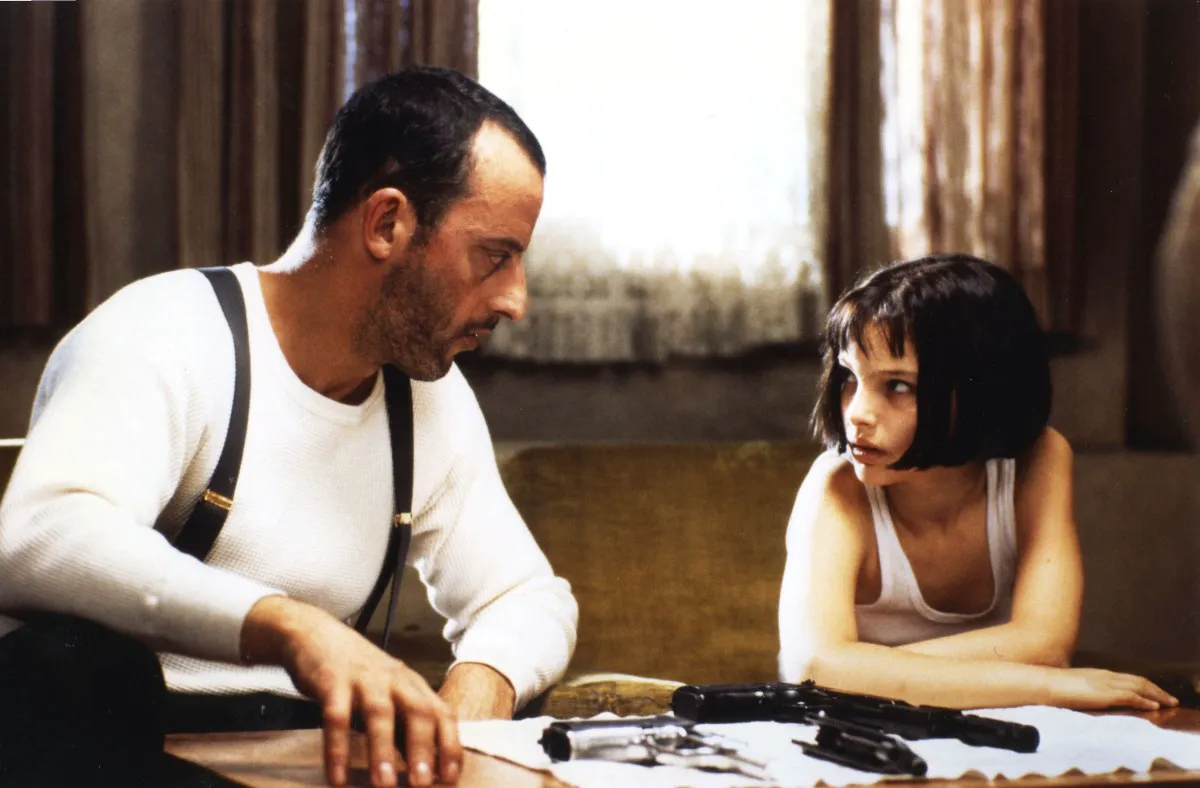The very first encounter with the protagonist convinces us that we are facing a typical workplace drama: an order, its brilliant execution, the road home from work (don’t forget to buy milk and water the aglaonema), sleep.
Along with the Atlantic Ocean, which Luc Besson crossed to film in New York, the invisible line that separated the “European” period of his filmography from the “Hollywood” one was also crossed. The very first encounter with the protagonist convinces us that we are facing a typical workplace drama: an order, its brilliant execution, the road home from work (don’t forget to buy milk and water the aglaonema), sleep. Neither the hero’s exterior, nor his habits, nor the persistent references to the classics should be misleading – even a poorly prepared viewer should ideally see Peter Bogdanovich’s “Paper Moon,” Vladimir Nabokov’s “Lolita,” and so on, and so forth.
“Léon” is a film about a man who does his job well. What makes Léon kill? Money? Fear of death? A sense of gratitude to the client? Obviously, none of these reasons is decisive. The killer in black glasses and a knitted hat, living in cheap apartments, is an artist and a true professional who is not stopped by pity for the client or the rational question “Why?”. He shoots because he cannot not shoot. Just as Besson himself cannot stop filming, despite all his promises and vows.
The Muse
Mathilda, played by the young Natalie Portman, who Léon meets on the landing, is Besson’s eternal muse. A nymphet, half-child, half-adult, an innocent and yet deadly dangerous creature. Mathilda is a wistful memory of Anne Parillaud, a premonition of Milla Jovovich. Love according to Besson is, first of all, mutual influence and mutual attraction, an exchange of information. It is no coincidence that he is so interested in the myth of Pygmalion and Galatea, so accurately reproduced in “Nikita,” where the main character, a street savage, is actually recreated in an intelligence center. The main characters of “Léon” play the same game. Only it is impossible to make out who is the teacher and who is the student.

Léon teaches Mathilda the deadly art of cleaning: how to breathe properly when shooting, when to open the optical sight, where to aim for a control shot. And Mathilda conducts the master’s social rehabilitation: she teaches him to sleep in a bed, to communicate with himself and, finally, to feel. In fact, this same scheme of communication, not even of genders, but of an artist and inspiration, was repeated by Besson in “The Fifth Element.” Only there the student was already perceived as an absolutely unique, perfect creature, who essentially did not need anyone’s lessons, and the master of shooting to kill, beaten by time and fate, could entrust her with only one value besides the word “multipassport” – his own clumsy heart.

Reception and Legacy
Fifteen years ago, “Léon” was received rather coldly by critics. The conversations mainly concerned the fifteen minutes cut by the producers and the juggling of cinematic clichés that Luc Besson voluntarily engaged in, as if teasing film critics with the imaginary narrowness of his own horizons. In one of the scenes, Mathilda dressed up as Charlie Chaplin and Marilyn Monroe for fun, and Léon played John Wayne – so no highbrow analyst could reconcile himself to the openly displayed soup set of associations.
Today it is obvious that “Léon,” despite its apparent simplicity and universality, is thinner and more accurate. This is one of the most poignant and personal confessions of a very technical artist who still believes in the divine essence of art and the dialogue that every true master tirelessly conducts with perfection.